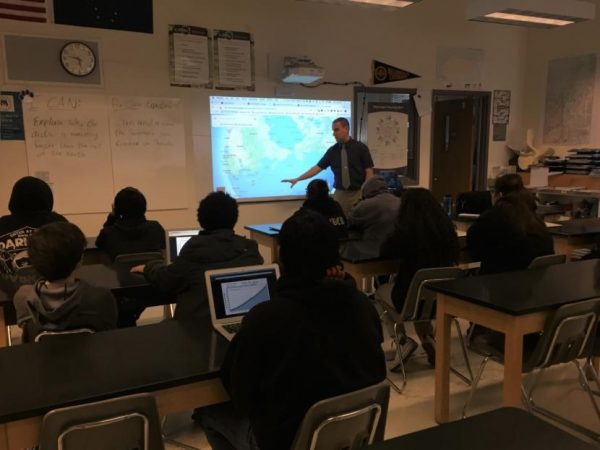
In Utqiaġvik, the average temperature has risen over 7 degrees Fahrenheit in the past 50 years. That’s among the biggest jumps in Alaska and the world.
People in Utqiaġvik are already experiencing impacts from that warming, like changes in the sea ice they hunt from, and increased coastal erosion as the period of time when the shoreline is protected from storms by sea ice has gotten shorter.
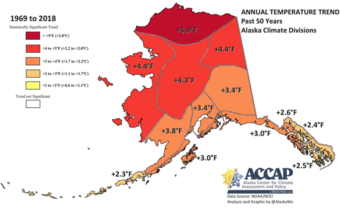
And in eighth grade science, students in Alaska’s northernmost town study climate change in a way that encompasses the global picture, but pays particular attention to what’s going on in their own backyard.
Third period is about to start at Eben Hopson Middle School, as science teacher Kevin Neyhard stands at the door to his classroom and ushers in the last stragglers from the hallway.
Neyhard has a lot to get through in this class period. The section he’s teaching right now sometimes gets a bit squeezed, since it’s at the end of the year. But for the past six years he’s been teaching here, he always gets to it eventually.
This is the part of eighth grade science where students in Utqiaġvik learn about climate change.
In today’s class, Neyhard is showing the class data reflecting how carbon dioxide levels and temperatures are rising, and how that corresponds with a decline in Arctic sea ice.
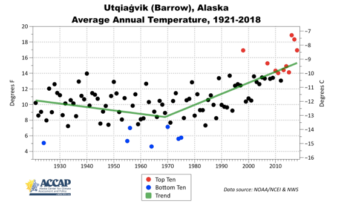
Just half a degree Celsius of warming could mean an ice-free summer on the Arctic ocean, he explains, which would lead to even more warming.
“Why else is the ice important?” he asks his students.
People shout out answers: “Polar bears!” “Seals!” “Walrus!” “Whaling!”
Climate change is personal to the students here, where many people use the land and ocean to access subsistence resources, and even residents as young as these 13- and 14-year-olds have seen a change in the coastline due to erosion.
Neyhard’s approach to this subject gets personal too. He usually starts this unit by handing out a homework assignment where students have to ask an adult outside of school a series of questions about climate change.
“Have you seen anything in your life that you would say is a result of climate change?” he reads out loud to the class, as he goes over the homework. “You know, examples,” he continues. “What have they seen change, if they’ve seen things change?”
Neyhard tells the students what he doesn’t want is for them to go home and say, “Here Mom, you have homework.”
“I want you to talk to people,” he tells them. “That’s the whole point, is to get you to actually talk and learn from people in the community.”
When students come back to class with stories from parents, grandparents, aunts, uncles and other adults, it becomes a sort of crowd-sourced teaching tool. Neyhard puts the answers in a database, and they go over it in class.
His curriculum is largely shaped by a growing national model for science education called the Next Generation Science Standards, which the North Slope Borough School District has adopted. The state of Alaska hasn’t adopted the next generation science standards yet, though they’re considering a framework incorporating it. The standards say students should be able to “ask questions to clarify evidence of the factors that have caused the rise in global temperatures over the past century,” with emphasis on “the major role that human activities play.”
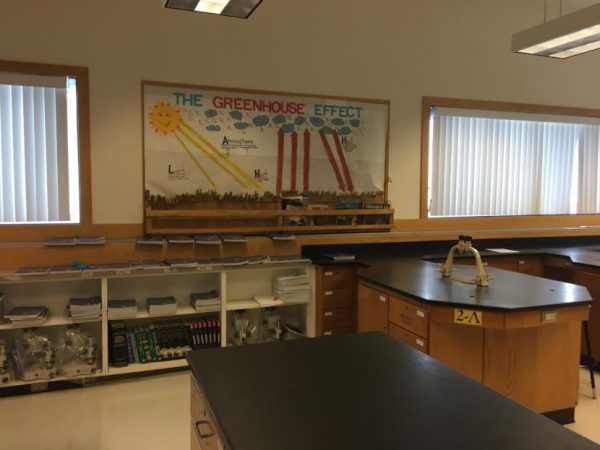
There is also a set of locally-developed Iñupiaq standards that relate to the environment and influence how Neyhard teaches this course. For example, they include an expectation that students show responsibility toward the environment by “comparing and contrasting conservation-oriented behaviors with irresponsible behaviors.”
But Neyhard also takes cues from the responses he gets to the annual survey.
“Basically, I want to try to teach in accordance with what this community is feeling and thinking,” he said.
The majority of the responses to the survey reflect a belief that human activity is either partly or fully responsible. So that’s the way he teaches it.
“I do lean towards the human influence of things,” he said.
He also gets the students out of the classroom for their climate change education. Each spring he takes them out onto the shorefast sea ice for a day-long field trip.
“They get the traditional, ecological perspective on sea ice and how it’s changing and shifting from the whaling crews and whaling captains,” Neyhard said. “And then they come back to a home base area … and we drill cores through the ice to learn about it from that perspective.”
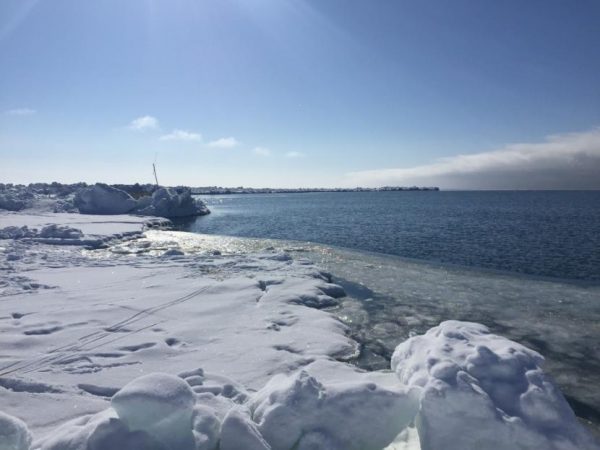
He also brings in area scientists to answer student questions.
“They ask about how it’s affecting a lot of the animals: seals, bowhead of course is a big one, polar bears, caribou,” he said.
Neyhard does talk about the challenges and potential consequences of climate change in this class — and that can be scary to some students. But he ends by talking about the ways that people are trying to address some of those challenges.
He keeps track of the adaptations that are being discussed in Utqiaġvik, and shares them with his students — like the idea of building a rock wall along the beach to slow erosion. Neyhard also has students do a final project where they research a particular approach to a climate change problem.
He wants them to walk away from this class not just with a better sense of how their world is changing, but also how people are trying to respond to that change — both globally and here at home.




